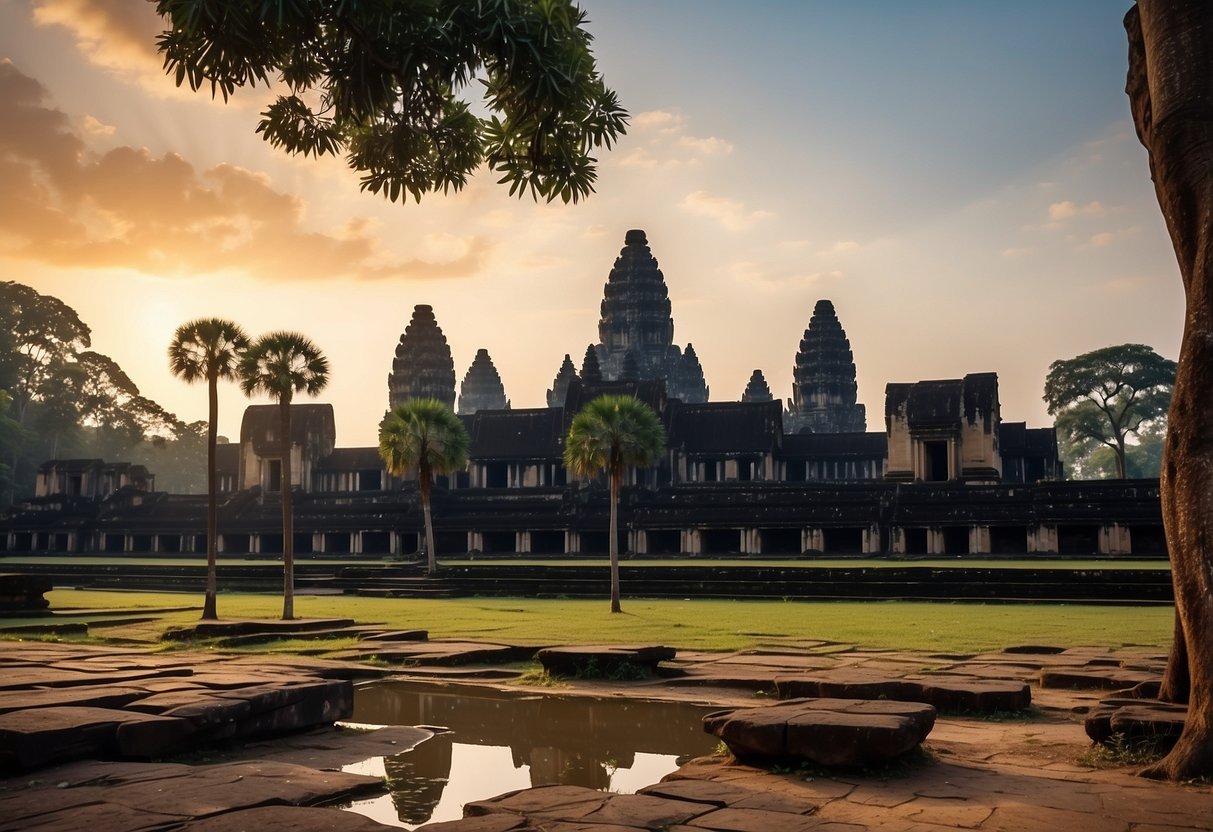
Nestled near the bustling town of Siem Reap, Cambodia, the ancient temples of Angkor Wat stand as a breathtaking testament to the grandeur of Khmer civilization. These monumental structures, recognized as a UNESCO World Heritage Site, provide an unparalleled glimpse into the rich history and culture of the region. Visitors are often awestruck by the intricacies of the carvings and the sheer scale of the temples, which continue to captivate historians and tourists alike.
The journey through Angkor Wat is a captivating experience that traces back to the 12th century. The sprawling complex showcases the architectural prowess and spiritual devotion of the Khmer Empire. Wandering through the temple grounds, one can see how each stone, intricately carved with scenes from Hindu and Buddhist mythology, tells a story of a bygone era.
Siem Reap, the gateway to Angkor Wat, has evolved into a lively hub brimming with cultural activities and amenities for travelers. From bustling markets to traditional dance performances, the town offers a unique blend of ancient history and modern vibrancy. This perfect juxtaposition makes it an essential destination for anyone eager to explore the heart of Cambodian heritage.
An Overview of Angkor Archeological Park
The Angkor Archeological Park is a site of immense cultural heritage and historical significance. It encompasses the renowned Angkor Wat, the ancient city of Angkor Thom, and various other temple complexes.
Significance of Angkor Wat
Angkor Wat stands as the largest religious monument globally and represents the pinnacle of Khmer architecture. Built in the early 12th century by King Suryavarman II, this temple complex was initially dedicated to the Hindu god Vishnu.
The grandeur of Angkor Wat is apparent in its extensive bas-reliefs and intricate carvings. These artistic details depict mythological scenes and daily life, showcasing the high level of craftsmanship of the era.
In addition to being an architectural marvel, Angkor Wat symbolizes Cambodian cultural identity and has become a national emblem.
Ancient City of Angkor Thom
Angkor Thom, constructed in the late 12th century by King Jayavarman VII, served as the capital city of the Khmer Empire. Enclosed by massive walls and a moat, it covers a sprawling area with numerous temples and public buildings.
Central to Angkor Thom is the Bayon Temple, known for its iconic stone faces. These faces, believed to represent either the king or a bodhisattva, add a mysterious aura to the city.
The city’s layout reflects sophisticated urban planning, including road networks and reservoirs that supported a large population. Angkor Thom illustrated the empire’s engineering prowess and societal complexity.
Roles of Other Temple Complexes
Apart from Angkor Wat and Angkor Thom, the park hosts several other temple complexes that contribute to its historical depth. Ta Prohm, for instance, is famed for being entwined with massive tree roots, creating a striking visual image.
Banteay Srei, known as the “Citadel of Women,” boasts elaborate carvings in pink sandstone. Its smaller scale does not diminish its artistic value, with many considering it a jewel of Khmer art.
Each temple within the park served varied purposes ranging from religious worship to royal ceremonies, enhancing the understanding of the Khmer civilization’s multifaceted legacy.
The Majesty of Khmer Engineering
The temples of Angkor Wat stand as a testament to the Khmer Empire’s advanced engineering and breathtaking artistry. Their architectural marvels and intricate carvings underscore the ingenuity and skill of Khmer builders.
Architectural Marvels of the Temples
The grandeur of Angkor Wat, the largest religious monument in the world, is evident in its grandiose layout. The central tower rises 65 meters, symbolizing Mount Meru, the center of the universe in Hindu and Buddhist cosmology. Stone blocks weighing as much as 1.5 tons each were used, transported from nearby quarries.
The water management system, including moats and reservoirs, reflects advanced understanding of hydraulic engineering. These structures provided not only a defensive mechanism but also a means of managing water resources efficiently. The precision in the alignment of the temples with celestial bodies demonstrates a sophisticated knowledge of astronomy.
Artistry in Ancient Construction
Khmer artisans adorned the temples with intricate carvings depicting scenes from mythology, daily life, and historical events. Bas-reliefs cover the walls, telling stories from the Ramayana and Mahabharata with remarkable detail. The craftsmanship is evident in the depiction of human figures, animals, and divine beings, each carved with meticulous care.
Intricate carvings of devatas, or divine maidens, decorate the temple. Each devata is unique, embellished with detailed jewelry and varied expressions. The sandstone used in construction was chosen for its durability and ability to be finely carved, contributing to the longevity of these artistic masterpieces. These artistic elements reflect both the cultural and religious significance of Angkor Wat within the Khmer Empire.